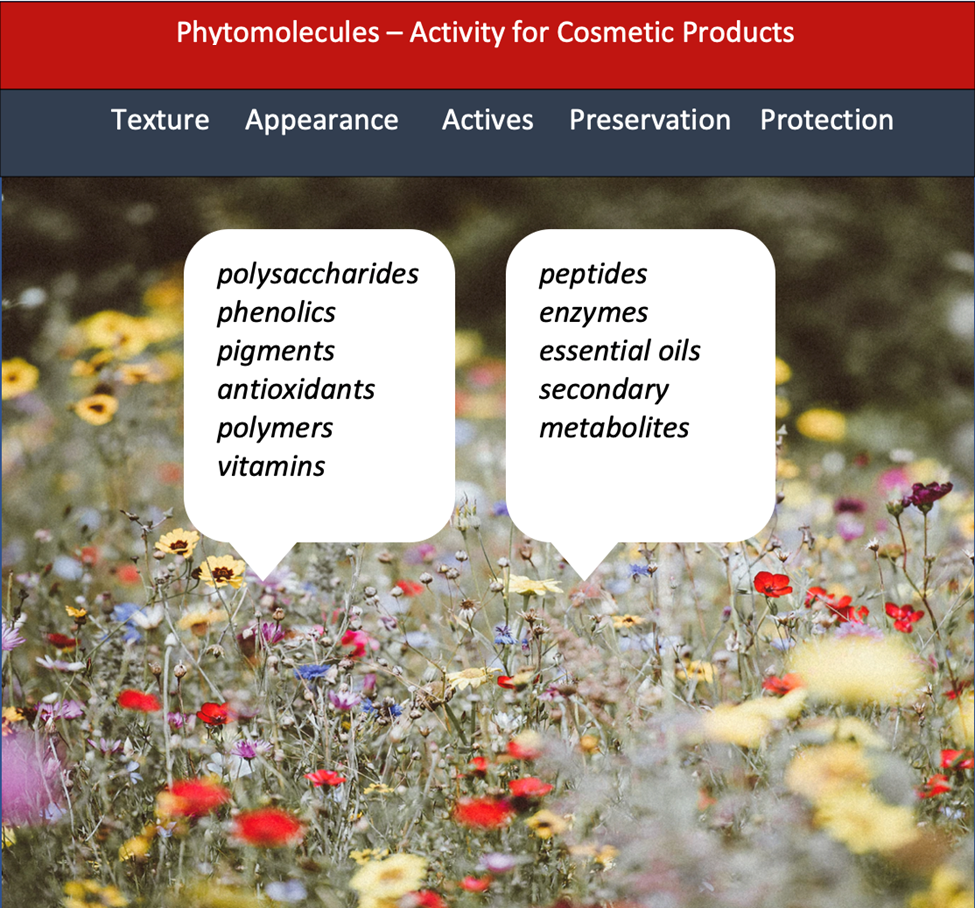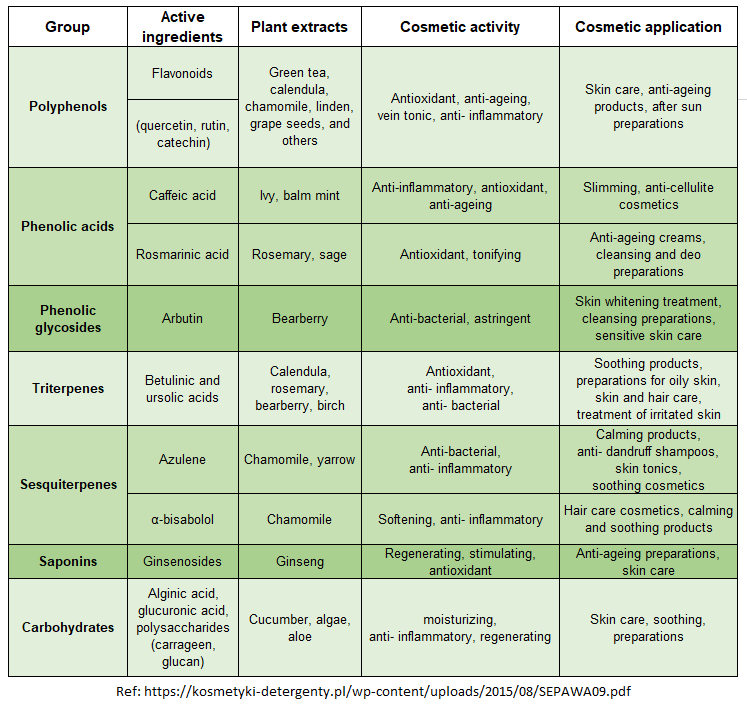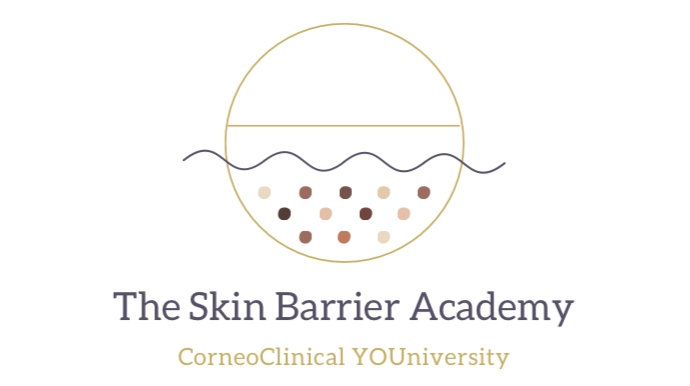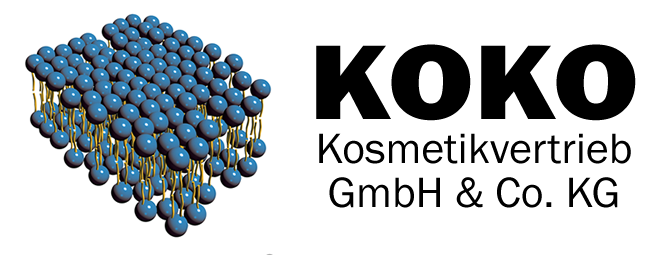By Dr. Erin Madigan-Fleck NMD, LE, LEI
The topical use of plants and natural compounds is as old as mankind and evolutionary observations have led to a deep appreciation of these products for their properties and their effects on the skin. Continual research and analytics have provided us with a greater understanding of over 320,000 plant species worldwide with approximately 300 to 400 species used in medicine and an estimated 3000 essential oils used in the cosmetic and food flavoring industry.
Cultural and historical accounts have bestowed us with an enhanced understanding of human and plant symbiotics in this vast area of study. One of the main resources for study is the BoDD (Botanical Dermatology Database) which is an electronic culmination of the volume Botanical Dermatology by Arthur Rook and John D. Mitchell curator at the Institute of Systemic Botany at New York Botanical Gardens.
The genres of the plant kingdom and botanical sciences encompass many headings including biology, physiology, plant breeding, biotechnology, botany, ecology, systems & evolution, and molecular biology. It is Ethnobotanical studies and physicochemical analyses which have provided information on the vast inventory of plants and the potential to enrich modern cosmetic products.
Plant materials utilized in cosmetic formulations continue to garner immense popularity due to the trending demand for natural and “green” cosmetics and personal care products. For countless millennials, generation X and Z consumers, the concept of natural products aligns with their ideals regarding health, sustainability, and the environment.
In Europe, Statista notes that the natural product market is expected to increase between 2023 and 2027 in total to 7 billion Euros (+26.72 percent). The revenue is estimated to amount to 3.34 billion Euros in 2027. [1] A study by SkyQuest Technology and Consulting cites that the global organic skincare market was valued in the United States at 9.75 billion USD in 2021, and it is expected to reach a value of USD 17.57 Billion by 2028.
Organic facial skincare is the largest category in this study within the organic skincare market, accounting for almost 60% of total sales. [2] Plant products present various genera of organization and their complexity is influenced by unique levels of molecular structures.
The individual chemical attributes of botanical compounds lie within the hundreds of specific phytochemicals that plants produce. Plant extracts contain a number of bioactive compounds of different classes, including alkaloids, terpenoids, and polyphenols, which possess numerous activities, such as antibacterial, antiviral, antifungal, antioxidant, and anti-inflammatory. One plant isolation may possess multiple characteristics among various parts of the plant, stems, rhizomes, or leaves.
Plants Inspire
Biomimicry is a term used to describe innovations inspired by nature. It involves the evaluation and interpretation of natural phenomena, evolutionary processes, predatory solutions, and climatic considerations. These concepts are evaluated and considered for adaptations in product formulation. The term biomimicry used in the laboratory setting refers to highly technological extraction techniques that preserve the entire plant profile including all components and actives of a plant.
The biomimetic concept is much aligned with the spagyric distillation process employed in traditional herbalism for centuries. The process does not damage the plant's bio-matrix and preserves the integrity of the plant’s attributes.
Biomimicry will not macerate or use decomposing plant materials, guaranteeing that the point of extraction happens during the most optimum time of the plant’s life cycle, which maintains the stability and integrity of the phytocompounds. This creates a synergistic relationship between the plant’s compounds at a cellular level while accommodating for individual skin needs. [3] Bioactive extracts and phytochemicals first act as skin preparations, then influence biological functions second.
The effects of these natural ingredients depend on both in vitro and in vivo efficacy, in addition to the primary base formulation. However, when using pure plant extracts for skin care, manufacturers must address quality control, consistency, and processing methods. In recent years, skin-barrier-reinforcing properties of many botanical compounds have been described.
The PubMed database reveals nine key botanical extracts that specifically improve skin barrier and/or promote keratinocyte differentiation in vivo after topical application. The topical application of Aloe vera (leaf gel), Betula alba (birch extract), Helianthus annuus (sunflower oleodistillate), Hypericum perforatum (St. John’s wort extract), Lithospermum erythrorhizon (root extract), Piptadenia colubrina (angico-branco) and Simarouba amara (bitter wood extract) were shown to increase skin hydration, reduced the trans epidermal water loss, or promoted keratinocyte differentiation. [4]


Corneotherapeutic philosophy involves very specific considerations regarding cosmetic ingredients and actives and the integration of esthetic procedures along with any accompanying modalities. As the stratum corneum acts as a gateway barrier to which compounds may permeate the skin, cautionary consideration should be given to the use of high-performance ingredients used in conjunction with plant compounds such as herbal tinctures or essential oils.
Although plant-derived compounds are fundamentally natural, they may pose additional concerns for acute or chronic skin irritations when used in certain combinations. Plant products have been known to produce allergic reactions ranging from pruritus to anaphylaxis as any other chemical compound.
The physiological and potential routes for compounds to penetrate the epidermis are either via intercellular permeation through the corneocytes of the stratum corneum or the follicular, sebaceous, and sudoriferous pathways. Other considerations for the permeation of compounds are polarity, molecular weight, the actual concentration of the active compound and molecule solubility. Cosmetic design and formulation have long supported the use of natural and botanical products derived from plants sources after much scientific validation. Phyto molecules such as ginsenoside, curcumin, epicatechin, gallic acid, hydroxycinnamic acids, hydroxybenzoic acids, etc. act as free radical scavengers, help to prevent trans epidermal water loss, assist in hydration, soothe, and protect the skin.
Although advance cosmetic technologies feature great formulation advancements, plant products remain quite relevant and when used in hybrid formulas.
Plant Oils
Certain natural plant-based and cold-pressed oils possess antioxidant, antimicrobial, and skin barrier repair properties establishing them as promising moisturizers for inflammatory skin conditions associated with barrier disruption. [5] Plant oils may perform many biochemical functions on the skin. These potential effects will vary with the chemical attributes of each functional component of the oil, molecular weight, the density of the oil, amount applied and companion ingredients in a formulation.
The evaluation of plant biochemical properties is an important consideration in selecting oils for their use on the skin, particularly for specific skin concerns. In the context of their activities, the composition of these oils is intrinsically linked to the natural lipid bilayers and lipids found in the skin. These factors help to define absorption rates and accumulation of plant compounds in various layers of the skin. The most important skin oils are those with high contents of linoleic and alpha-linoleic acid as they incorporate into cell membranes and may regenerate the lipid barrier and restrict TEWL. [6]
Plant oil components include triglycerides, tocopherols, sterols, phospholipids, waxes, squalene, and phenolic compounds. When topically applied, these compounds individually and collectively, influence skin physiology, skin barrier, inflammatory status, antioxidant response, and proliferation. [7]
The most abundant fatty acids responsible for plant oil therapeutic effects are oleic, linoleic, and linolenic acids. Linoleic acid has a direct role in maintaining the integrity of the water permeability barrier of the skin and skin barrier restoration from disruption. They are metabolic precursors of arachidonic acid in the skin and prostaglandins in the epidermis and are important for the regulation of cell division and epidermis differentiation. [8]
Plant oils also vary by the type and the number of triglycerides, and (FFAs) free fatty acids, saturated fatty acids (SFAs), and unsaturated fatty acids (UFAs). Research has suggested that oils composed mostly of monounsaturated oleic acid increased skin permeability more than oils containing an almost even mixture of both monounsaturated and polyunsaturated fatty acids.
Viljoen et al. has suggested that the lipid penetration within the epidermis follows the order: olive oil > coconut oil > grape seed oil > avocado oil. [9] Moreover, the concentration of FFAs such as oleic acid with respect to triglycerides correlates with clinical measures of skin barrier function. This ratio determines molecular interactions with SC lipids and the extent of their penetration within the epidermis. [10]

Aloe Vera
Aloe barbadensis miller belongs to Asphodelaceae (Liliaceae) species and contains 75 potentially active constituents including vitamins, enzymes, minerals, sugars, lignin, saponins, salicylic acids and amino acids. Aloe barbadensis is rich in mucopolysaccharides that help in binding moisture into the skin and decreases the appearance of wrinkles and erythema. Aloe barbadensis precipitate of high quality offers a cohesive effect on the superficial flaking of epidermal cells, smoothing and softening the skin, stimulates the fibroblast thus encouraging collagen and elastin fibers. It has a profound moisturizing effect have also been studied in the treatment of dry skin associated with occupational exposure.
Aloe barbadensis contains the substance glucomannan (polysaccharide) and gibberellin (growth hormone) that interact with growth factor receptors on the fibroblast and significantly increases collagen synthesis after the use of both topical and oral aloe vera. In wound healing, Aloe barbadensis not only increased collagen content of the wound, but also changed collagen composition and increased the degree of collagen cross-linking.
An increased synthesis of hyaluronic acid and dermatan sulfate in the granulation tissue occurs in the healing of a wounds. Another study showed that aloe sterols stimulated collagen and HA production by human dermal fibroblasts and that aloe sterols reduced facial wrinkles in women. [11] Gel polysaccharides found in aloe vera gel have immunomodulatory properties. Polysaccharides are complex carbohydrates that have potent therapeutic benefits as demulcents.
Demulcents are natural plant skin hydrators and perform distinct barrier function capabilities. This is one of the most impressive naturally mediated reactions that plants produce—having an affinity to act in defense of barrier function.
Avocado Oil Persea americana
Avocado oil is rich in linoleic acid (6.1–22.9%), linolenic acid (0.4–4.0%), and oleic acid (31.8–69.6%). It also contains β-sitosterol, β-carotene, lecithin, minerals, and vitamins A, C, D, and E. Research has revealed faster re-epithelialization and higher hydroxyproline content of the repaired wound. The topical application of avocado oil has been shown to increase collagen synthesis. [12]
Beta-Glucan
Beta-glucan is a glucose polysaccharide that can be found in the cell wall of baker’s yeast, plant cellulose, bran, oats, fungi, barley, and mushrooms. The most biologically active are isolated from cell membranes of baker’s yeast (Saccharomyces cerevisiae). Long-term use of glucan shows a reduction of wrinkle depth, height, and overall roughness, likely caused by stimulation of fibroblasts and increased production of collagen.
One study detail that despite its large molecular size, beta-glucan can deeply permeate into the epidermis and dermis. A clinical study of 27 subjects was performed to evaluate the effects of beta-glucan on facial fine-lines and wrinkles. After eight weeks of treatment, digital image analysis of silicone replicas indicated a significant reduction of wrinkle depth and height, and overall roughness. [13]
Cassia Angustifolia (Senna)
Cassia angustifolia—known as senna, Cassia senna or Alexandrian senna—is a native plant from India that has been used in Ayurveda for over 2,000 years. In cosmetic manufacture, it is primarily used as a skin conditioning agent because of its high content of polysaccharides.
Research has shown that isolations of senna include a beta glycan fraction and galactomannan from the seeds of the senna plant, which is laden with polysaccharides. Galactomannan has been shown to mimic hyaluronic acid. Studies have demonstrated cassia to effectively repair dryness, provide long lasting moisture, exhibit film-forming capacities and provide humectant properties. [14]
Edelweiss
Leontopodium alpinum (edelweiss) is from the family Asteraceae, which is a wildflower that grows in rocky limestone places that are familiar and native to the Swiss Alps. Leontopodium alpinum (edelweiss) callus culture extract (LACCE) showed strong antioxidant activity in response to UVB treatment, suppressing inflammation and wrinkling, as well as increasing moisturizing activity.
A study showing consistent application of LACCE on the face and skin tissues improved anti-periorbital wrinkles, skin elasticity, dermal density, and skin thickness. Sequencing results showed at least 16.56% of human genes were expressed in keratinocyte cells. [15]
Glycerin
Glycerin is a humectant and emollient that has been used for decades in skin care. Plant glycerin differs from sodium hyaluronate regarding its ability to attract and retain water to a much lesser degree. Glycerin has a naturally lower molecular E G weight, giving it a greater potential to provide deeper hydration.
In contrast to the LMW HA, glycerin offers this hydration without the potential for the activation of inflammation (unless an allergy potential exists).
In vitro studies in a study have shown glycerin to prevent crystallization of a stratum corneum model lipid mixture at low room humidity. The study questioned whether this may affect the skin’s barrier function during repeated application of glycerin in a cream base to normal skin. Considered was the influence of a cream containing 20%, glycerin compared to a placebo cream in a bilateral, double-blind study on 17 volunteers.
The effect was evaluated as influence on hydration with a corneometer and on skin barrier function. Skin barrier function was assessed as permeability to water (TEWL) with an evaporimeter and as sensitivity to an irritating surfactant by measuring the biological response (measured as TEWL and skin blood flow). Ten days of treatment to normal skin with 20% glycerin significantly increased skin corneometer values, indicating an increased hydration. [16]
Glycosides
Glycosides or sapogenins belong to a category of plant constituents that are easily transferable between plants. Glycosides such as cellulose form the plant cell walls and fibers. Salicin is a glucoside of willow bark extract and is formed from glucose and salicyl alcohol and has antimicrobial effects similar to salicylic acid. Saponin base bodies are characterized by a complex ring structure via a single sugar molecule.
The saponin ruscin occurs in butcher's broom extract and steroidal saponins are also found in kigelia extract (sausage tree) and horsetail extract. Saponins stabilize the superficial capillary blood vessels and tighten the surrounding connective tissue similar to aescin (mixture of different saponins of horse chestnut).
Saponosides occur widely in calen- dula, ivy, licorice, and other plants. Seeds of horse chestnut include triterpene saponin termed escin, which is the compound decreasing the fragility and permeability of microvascular vessels. Mucigenous (gums) glycosides include xanthan, guar, pectin’s, acemannan (aloe vera), galactoarabinan (North American larch tree), and alginates from algae extracts. [17]
Grape Seed Oil (Vitis vinifera)
Is rich in phenolic compounds, vitamins, flavonoids, tannins, and stilbenes. The main polyphenols in grape seed oil are catechins, epicatechins, trans-resveratrol, and procyanidin. Grape seed proanthocyanidin extract contains resveratrol has been shown to expedite wound contraction, enhanced synthesis of vascular endothelial growth factor (VEGF), and greater connective tissue deposition. Topically applied resveratrol increases cathelicidin production in normal skin. Cathelicidin is one of the antimicrobial peptides and inhibits the growth of Staphylococcal aureus. The phenolic compounds, resveratrol, and vitamin E in grape seed oil provide most of its antioxidant activity. [18]
Mucilage (fenugreek)
Mucilage containing herbs work similarly to polysaccharides in that they become sticky and “swell” when they come in contact with water. This allows them to act as a “plant bandage,” protecting dry or mildly inflamed skin. Botanicals such as marshmallow, mullein, slippery elm, flax, and fenugreek are examples.
Oligosaccharides
Oligosaccharides are combinations of specific sugars (sucrose) and polysaccharides that perform various tasks. Aqueous plant extracts provide cosmetic active agents are contained in the form of a glycoside. Water-soluble oligosaccharides serve for the energy transport in cells and are stored and transferred into starch in plants, or glycogen and are mobilized from storage when needed. [19]
Oligosaccharides have been reported to support the synthesis of the major components of the skin, which are collagens type I, and limit the extracellular matrix degradation by decreasing the metalloproteinase-1 activity. [20]
Polyphenols
Polyphenols are a very large and important group of natural compounds with chemical structures that can be classified as flavonoids, phenolic acids, tannins, or stilbenes.
Flavonoids are polyphenols and exist as aglycones or glycosides. Important sources of flavonoids include blackcurrants, green tea, apples, cherry, peach, citrus fruits, and soybeans (isoflavones). Polyphenolic compounds are anti-inflammatory, moisturizing, smoothing, soothing, anti-aging, UV-protective, antibacterial, and capillary stabilizing properties, and exert a strong antioxidant effect.
Shea Butter (Vitellaria paradoxa)
Shea butter is composed of triglycerides with oleic, stearic, linoleic, and palmitic fatty acids, as well as unsaponifiable compounds, and is frequently used in the cosmetic industry due to its high percentage of the unsaponifiable fraction (e.g., triterpenes, tocopherol, phenols, and sterols). These possess potent anti-inflammatory and antioxidant properties.
Shea butter has exhibited anti-inflammatory effects through inhibition of COX-2, and cytokines via the NF-κB pathway. Additional research on AD has shown that the cream containing shea butter extract had the same efficacy as ceramide-precursor products. [21]
Sunflower Seed Oil (Helianthus annus)
The components of sunflower oil mainly consist of oleic and linoleic acids. Sunflower seed oil contains relatively higher linoleic acid concentration relative to olive oil. This property makes sunflower oil a suitable ingredient in skin products due to the positive benefits of linoleic acid.
Sunflower seed oil has been shown to preserve SC integrity and improve hydration of the adult skin without inducing erythema. Linoleic acid serves as an agonist at peroxisome receptor-alpha (PPAR-α), which enhances keratinocyte proliferation and lipid synthesis, and this in turn enhances skin barrier repair. [21]
Plant and natural compounds continue to be desirable in skincare product formulations. As the chemical compositions of these oils consist primarily of triglycerides with various fatty acid chains and small fractions of FFAs, synergistic formulations have great relevancy when evaluating ingredients and products for the support of skin barrier protection.
References used in this article:
- https://www.statista.com/forecasts/1221138/europe-revenue-natural-cosmetics-market
- https://www.globenewswire.com/news-release/2022/12/07/2569282/0/en/Organic-Skincare-Market-to-Enjoy-Sales-Revenue-Growth-of-80-By-2028-Millennials-are-the-Key-Target-for-Players-SkyQuest-Technology.html
- https://www.gcimagazine.com/ingredients/regulatory/article/21849290/biomimetics-beauty-ingredients-that-mimic-bio-functions
- https://karger.com/spp/article-abstract/24/6/289/305118/Dermocosmetics-for-Dry-Skin-A-New-Role-for?redirectedFrom=fulltext
- https://pubmed.ncbi.nlm.nih.gov/28707186/
- https://biomeddermatol.biomedcentral.com/articles/10.1186/s41702-020-00062-9
- https://pubmed.ncbi.nlm.nih.gov/22115797/
- https://www.scielo.br/j/bjmbr/a/CyQTBVR9MvsX3jrcSMvk4MF/?lang=en
- https://pubmed.ncbi.nlm.nih.gov/26161938/
- https://www.ncbi.nlm.nih.gov/pmc/articles/PMC4068283/
- https://www.ncbi.nlm.nih.gov/pmc/articles/PMC2763764/
- https://www.ncbi.nlm.nih.gov/pmc/articles/PMC5796020/
- https://onlinelibrary.wiley.com/doi/abs/10.1111/j.1463-1318.2005.00268_3.x
- https://www.truthinaging.com/ingredients/cassia-angustifolia
- https://www.ncbi.nlm.nih.gov/pmc/articles/PMC7074254/
- https://onlinelibrary.wiley.com/doi/abs/10.1046/j.1467-2494.2001.00060.x
- https://dermaviduals.de/english/publications/special-actives/saponins-in-skin-care.html
- https://img.cosmeticsandtoiletries.com/files/base/allured/all/document/2023/04/CT_119_06_067_07.6436d496af965.pdf
- ,20,21https://www.ncbi.nlm.nih.gov/pmc/articles/PMC5796020/











